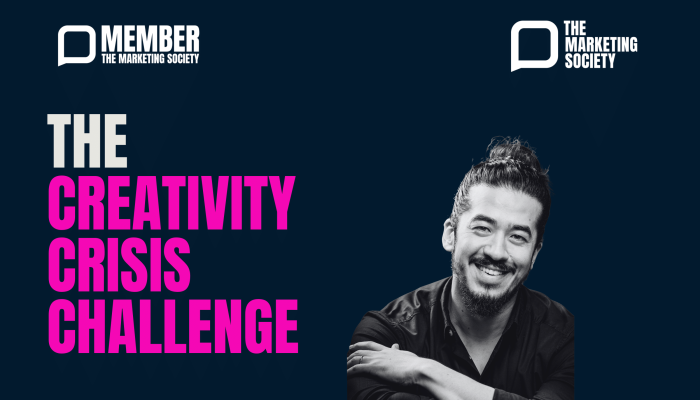In 2020, marketers need research approaches that help us explore the world as it really is: chaotic, uneven and simultaneously totally mundane and wildly unpredictable.
This pandemic is an important reminder that as marketers we cannot always foresee or influence new needs and behaviours. With an unprecedented, but widely predicted, environmental crisis unfolding we should already understand that the needs and desires we seek to serve or generate might not remain relevant, and might even be accelerating environmental collapse. We therefore have a responsibility to critically explore the multiple future scenarios that are likely, possible and some of those that right now seem preposterous. It’s tempting when exploring futures to fall into simplistic utopia and dystopia narratives, but as Covid-19 demonstrates, the reality is usually a mix of both depending on where you’re sitting. Great futures practice deftly handles the grey areas, looking for a mix of signals from different cultures and contexts and exploring a diverse range of scenarios.
The emergent field of speculative design asks us to explore these scenarios through creating artefacts, symbols and systems as if sent from the future. These are futures we can then interact with, to feel and experience how they might be to live in for the everyday person. In this way the researcher engages in a kind of reverse archaeology. Exploring hypotheses about a different time through constructing the behaviours, rituals and beliefs that characterise everyday life: the micro telling us so much about the meaning of the macro context.
During this pandemic period we find ourselves plunged into exactly the kind of speculative scenario that futurists eagerly explore. And we are all active participants in a co-created futures research project. The parameters of our new context, urging us to prototype and test new ways of working, paradigms for socialising and entire economic models. The things we miss and the surprise novelties which we hope will stay, are collectively generated insights into how we hope to be, and how we might best cope with disruption on a massive scale.
This kind of futures exploration is not about solving a problem through innovation or even identifying the ‘jobs to be done’, but engaging in a thorough questioning of the problem itself and the assumptions structuring the strategy. How might we have conceived of the role for conferencing platforms differently had we been imagining users living with enforced social distancing and global travel restrictions rather than iteratively solving for efficiency? Exploring futures also highlights lateral connections for our expertise and offering because we’re exploring outside of our typical context. How might the rapid prototyping of remote education during Covid-19 lead us to better understand the context for educating millions of displaced people?
These methods sound academic and detached from mainstream business and consumer culture - and they can be. But there’s currently plenty of brilliant work being done to explore futures with everyday people and to create impact across a variety of organisations. For instance, Moove Lab and Neeley Worldwide created a ‘children’s book of the future’ entitled Where do cars go at night? An example of how a ‘future artefact’ can make complex futures exploration simple and impactful. The book helped Mercedes Benz executives think about the implications of driverless cars beyond the technology itself.
Mexican design studio Diagonal Estudio conducted futures ethnographies with low-income Mexican families to co-create domestic futures and prototypes of products and systems that might empower this demographic to be more self-sufficient.
 Installation of ‘diegetic prototypes’ at Abierto Mexicano de Diseño
Installation of ‘diegetic prototypes’ at Abierto Mexicano de Diseño
Enriching our research process with these kinds of tools and approaches helps us build more resilient brands, training teams to flexibly imagine their role in the lives of consumers and users across multiple scenarios.
It also holds a mirror up to the kinds of beliefs and ideals that underpin our businesses - that continuous growth is the goal, that brand distinctiveness is king. Bravely treading this unknown ground is not only intriguing but commercially, socially and environmentally necessary.
3 ways marketing leaders can incorporate speculative futures into practice:
- Explore variations of the ‘future cone’ model in your mapping of trends and futures. These models help us process complexity and make sure we encompass multiple possible futures in our planning and assumptions.
- Start prototyping future objects, services and situations to make futures insights tangible and to enrich stimulus for consumer research.
- "Close the loop" and take what you've learned from interactions with the future, to change direction on current product, strategy, or investment to move closer to desired states and avoid others
Using speculative design and futures exploration as part of your insight process builds resilience, raises new future-relevant questions and helps businesses reflect on how their current ways of thinking might be better tuned to a future full of the ‘unprecedented’.
Gemma Jones is a researcher and strategist specialising in cross-cultural insights and design futures. She is also a co-founder of School of Critical Design. School of Critical Design offers training programmes and workshops that help connect these emerging design tools and ways of thinking with more familiar practices like service design, innovation and trends research.


